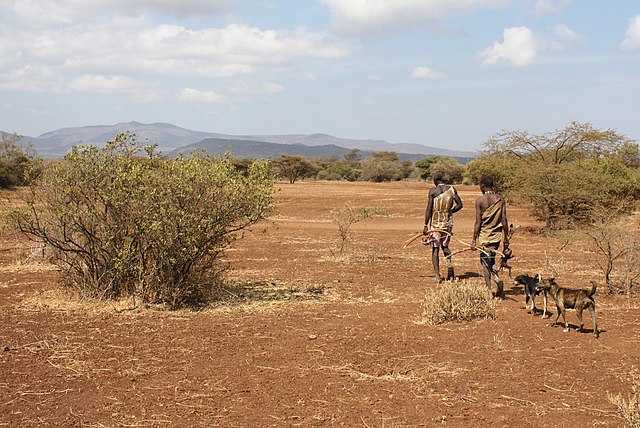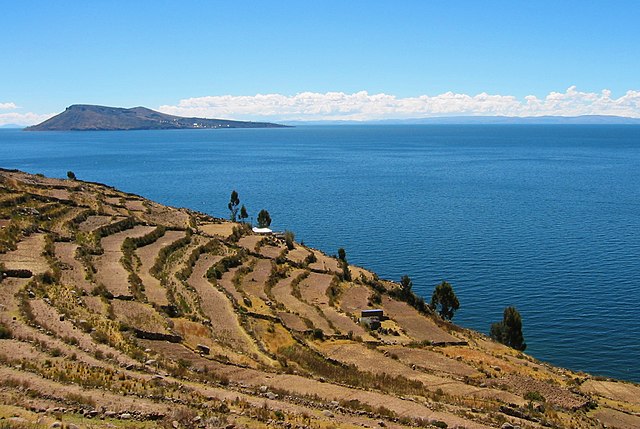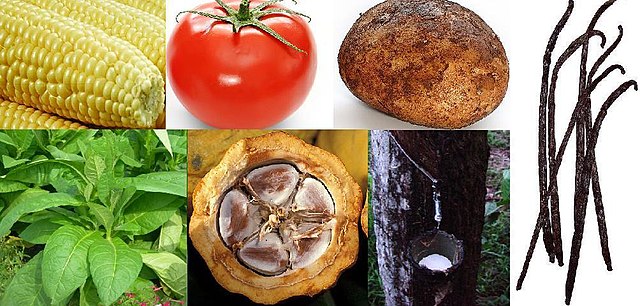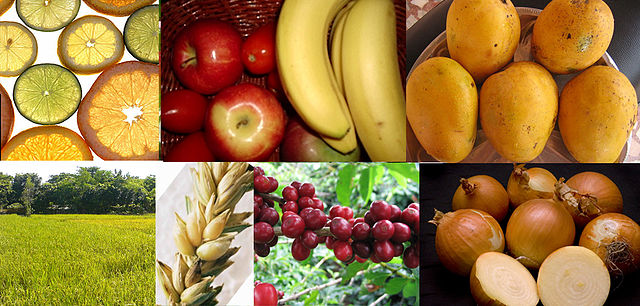Loading AI tools
Hunter-gatherer is an anthropological term used to describe human beings who obtain their food from the bounty of nature, hunting animals and gathering wild plants [1]. It is a subsistence lifestyle, practiced by all early human societies. Such people are generally nomads, moving on as food supplies dwindle. There is little development of skills or specialized labor beyond that required for hunting and gathering food. Such societies generally remain small, consisting of several, often related, family units[2].

From the beginning of mankind, hunting and gathering methods was the initial way to survive[3] . Hunting and fishing for meat, and gathering edible fruits, vegetables, and insects was the way to eat and live [4]. For thousands of years hunting and gathering was the only method for food consumption. The original change or revolution was the Neolithic Revolution which was around 10,000 years ago [5]. This was a major change in human life regarding learning how to cultivate crops and herding wild animals. This brought a large change to the process of hunting and gathering which was still in effect, but not the only source of food. The world did not develop as a whole but independently in separate parts of the world. Climate and the ending of ace ages and the migration of people and animals had a play in this separate development [6].
After the [Neolithic Revolution]] a model for of the agriculture revolution began. The first famers existed sometime around 8000 BC [7]. Initially starting with just small crops, the farming of animals was initiated. This was the beginning of the Agriculture Revolution which similar to the Neolithic revolution happened at different times around the world over a series of years.
Prior to the Agriculture Revolution traditional hunter gatherers were fully dependant on the edible food, and animals they were physically able to hunt. Due to the creation of farming and herding, the hunter gatherer lifestyle was slowed removed from our way of life. Even though it is scarce, there still are tribes who are totally dependent on hunting and gathering all of their foods.
The traditional hunter-gatherer was a self dependant being who had a diet based on what was available. Though there was a general guide to provide proper healthy diet. In a very simple diagram it would look something like this:
There are many phases of evolution in regards to agriculture. This period spanned thousands of years and today it is referred to as the Agricultural Revolution. The Agricultural Revolution was the most influential change for hunter/gatherer/foraging societies along with food production and the human manipulation of the physical environment. It is at this stage that human beings began to control and shape the worldaround them leading to the eventual domination of the world and the expansion of the human race[8].
There are many phases of agriculture which span over thousands of years, beginning about 10,000 years ago. The development of agriculture from then to the present is quite remarkable as human beings as we know them had lived as hunters and gatherers for about 100,000 - 200,000 years[9]. Firstly, cultigens (gardens) were established and small scale domestication of animals and plants. Then sedentary lifestyles arose with the formation of permanent fields and crops along with herding and raising of animals. These stages would eventually lead to trade, travel, expansion and a modern style of civilization such as villages and cities. Examples of such can be seen all around the world originating on larger scales in parts of Europe and the Middle East [10]. There is also some cross over during the periods of hunting and gathering lifestyles to farming culture. Some anthropologists and archaeologists believe that these two lifestyles interacted with each other before “agriculture was adopted by hunter-gatherers.” [11].

There are many theories why hunter and gatherer societies]] changed to farming societies. Many of these theories relate to each other or focus on only a few reasons why they changed. The reasons may never be known entirely but there are some very valid theories to consider. For instance, Oasis or Propinquity Theory, proposed by V. Gordon Childe, contends that hunters and gatherers developed agriculture and domestication during times of climate fluctuations as a necessity but also because at these times they had the opportunity. Animals and humans found common areas that were optimal and thus they could interact with more species [13]. Though this theory is flawed, as it does not explain all circumstances of areas where agriculture grew, it does give good insight as to one possible reason why agriculture was developed. Another theory for the development of agriculture states a number of reasons why the change happened. Most notably that at times foraging, hunting and gathering, gardening and agriculture were all practiced, sometimes together but the importance of each was determined by it‘s cost- benefit ratio [14]. But as foraging efficiency decreased and population growth increased the need for the further development of agriculture was a necessity [15]. All of these theories should be considered when asked why hunter- gatherer societies became agricultural societies.
Though the Agricultural Revolution is considered one of the most important factors that led to the growth human development and societal development it also led to the deterioration of the environmental world, at first just around the areas where agriculture had developed but would eventually lead to the world issues of today. Hunters and gathers though smaller in numbers to begin with made their own dent in the ecological environment. Through human interaction, some depletion of some habitats have been attributed to the destruction caused by humans. For example, forest and grass fires, land and forest clearing for living and growing space and over-hunting of certain species contributed to the shaping of the environment before or during the early stages of the Agricultural Revolution [16]. During times of further development in the Agricultural revolution, agricultural areas began to limit the diversity of the organisms living in the areas around these settlements. Another important and destructive consequence of the agricultural areas, especially around water ways and oceans was erosion which can be seen today, most notable in the Mediterranean. The erosion, caused by over use of soil and crop production or overgrazing of animals, caused deterioration of the land many times causing the land to sink lower and lower until it could no longer be used and often was flooded. Many times these factors caused microclimate changes to these areas and even today these microclimates still exist and effect the areas [17]. These ideals of changing the land to suit our needs still exist today, only now they are often manufactured on a large scale, such as the diversions of the major rivers in the Soviet Union into the Arctic Ocean, have created climate change around the world [18].
The development of agriculture allowed for societies and human expansion to advance further and although this allowed for the human race to prosper it also allowed for infection and disease to develop. Though infection and disease existed before the development of agriculture, disease was never as devastating until agriculture allowed for more people to live together in large groups where infection and disease would manifest and grow [19]. In recent history, livestock and other animals such as poultry have been subjected to living in large numbers in close quarter which has lead to disease among them and thus creating devastating disease among humans like H1N1. Today, the effects of this lifestyle of human beings can be seen with widespread disease effecting all areas of the world [20].

The Age of Exploration officially started in the beginning of 15th century and lasted until the 17th century [21]. The period is described as a time when Europeans began discovering the world by sea in search of spices, new goods, and new trade routes. In addition, some explorers set sail to spread their laws, religion, and cultures [22]. Whatever the reasons may be, the information obtained during the Age of Exploration significantly helped how humans hunt and gather food. As Christopher Columbus discovered the Americas and Western Europe discovered the various economic opportunities available in the New World, agricultural exchanges between the two regions led to exchanges of other items [23]. The exchanges that began during this period affected the way people lived on every continent.
Explorers and conquistadors brought many new plants to the Americas[24]. They brought European crops such as barley and rye. They introduced wheat, which was originally from the Middle East. They provided plants that had originally come from Asia, including sugar, bananas, yams, citrus fruit, coffee, rice, and sugarcane. In addition to plants, Europeans brought domesticated animals such as cattle, sheep, goats, pigs, and horses. Eventually, people began to breed horses, cattle, and sheep in North America, Mexico, and South America. With the introduction of cattle, many people took up ranching as a way of life. Cattle took over native grasslands as well as areas that Native Americans had used for growing food. In North America, the horse dramatically changed how many Native Americans lived. They soon learned to use horses for hunting and warfare. Before, Native Americans hunt buffalo on foot. It wasn’t easy, as buffalos can run away faster than a hunter can run after it. However, with the introduction of horses, the natives hunted buffalo more effectively. The Native Americans found an abundance of buffalo to hunt, which exceptionally meet all of their food, shelter and clothing needs. Several groups even gave up farming and became nomads who hunted buffalo.

Along with new plants and animals, Europeans also brought deadly diseases. This biological exchange had the greatest impact of all on Native Americans. Native people had no resistance to such diseases as measles, smallpox, mumps, whooping cough, influenza, chicken pox, and typhus. Millions fell sick and died. Diseases brought by Europeans wiped out as much as 90 percent of the native population of the Americas[25]. With so many people dying, there was a huge shortage of available workers in the Americas. This was one reason Europeans turned to African slaves to work their plantations.
Diseases and animals from the Americas had relatively little impact on other continents. However, new plants and crops from the Americas changed people’s lives all over the world. Europeans brought many native plants from the Americas back to Europe. People in Europe were introduced to maize (a type of corn), potatoes and sweet potatoes, beans and squashes, tomatoes, avocados, papaya, pineapples, peanuts, chili peppers, and cacao (the raw form of cocoa). New crops from America changed how Europeans lived and farmed. The potato, for example, had an enormous impact. It was nutritious and easy to grow. It helped people create a stable food supply. As a result, the population surged. Eventually, the growth in population contributed to major social changes, such as the Industrial Revolution.

Plants and crops from the Americas also spread to Africa and Asia. They also transformed people’s diets and lives on those continents. Maize became a staple food in North Africa, Egypt, southern Africa, China, and India. Peanuts and cassava (an eatable root) provided new foods to West Africa. The chili pepper became a popular ingredient in Asian cooking. The potato crop also influenced Asia as potatoes grow well in the mountains. As a result, the Chinese were encouraged to settle in mountainous areas for the cultivation of potatoes. The sweet potato, thus, became the third most important crop in China, after rice and wheat.[web 1]
The industrial revolution was an era that initialized mankinds’ diversion away from the traditional hunting gathering way of life. The demand for more goods, and a more efficient way of producing and distributing them, was growing, and thus a number of changes were slowly coming to the forefront in the new age of commodification of not only goods but labor production in the western world. This introduced the foundations of mass production in relation to the food industry and also the creation of the tools and equipment used on a daily basis. Through the ages we can see the physical and ideological changes as it relates to crop growth and distribution.

Between the 17th and 19th century in Europe, the advances in science allowed for improved methods of crop production, livestock breeding and the creation of more effective farm equipment. With the invention of the seed drill in 1701, farmers would no longer have to scatter the seeds across the fields themselves. Instead, they would place the seeds in straight rows which allowed for better control of weed growth [26]. In the past, weeds were stealing nutrients from the viable crops that needed them and, come harvest season, farmers and the people who depended on them, were left with less than they expected because the tares could not be removed while they were growing in close vicinity with the viable crops. This simple change in irrigation and planting allowed the farmers to better control the quality of the crops they grew and made sure that the resources were available for everyone to share. It created less work, but allowed for better production of goods and allowed labourers more time to spend on increasing their crop share.
During the first part of the American Civil War, farm labour was depleting because of the need for new recruits. Farmers now had to buy machinery to do their jobs, and replace the human workers they once relied on. This also meant that more machines needed to be designed and built, which that meant more work was becoming available for factory workers [27]. So not only was the war effort removing farmers and agriculturalists, but, it was also creating a new niche of labour, engineering. Human and animal labors were more or less being replaced by machine power allowing a lot more to be done in a short amount of time. WWI saw the same increase in the need for machinery to produce more food. Due to the large loss of food supply from the Germans sinking British ships, more tractors and farm equipment had to be ordered to speed up the farming process [28]. It was also at this time, that the production of preserved food increased, so as to allow foods to last longer while they were being transported to soldiers. Although the preserving of food in jars and containers was not a new idea, the canning of foods by companies was becoming more popular. In addition, food companies developed the idea of creating and using fillers and additives, made up of meat or starches, in the food products, again, alllowing them to stretch and last longer [29] The introduction of chemicals in foods also proved useful. For example, antioxidants such as butylated hydroxyanisole and ascorbic acid prevented compounds in food from combining with oxygen to produce inedible changes [30]. These large-scale uses of the preservation methods by agricultural producers also influenced the home life of the farmers, so they no longer had to use up their own crops in a short amount of time, but were able to send more of their production out for profit, while ensuring that their own families did not go without. These ideas and method soon became widely use outside farm life too.
After the First World War, the transition from counties and farmland to cities and townships saw an even more dramatic change in the way that the goods derived from agriculture was handled. As a result of increased urbanization and population growth, food shortage as well as spoilage was a becoming big problem. Newer ways of food presevation were being developed to help rectify the situation. For a long time, civilizations had there own way of “refridgeration” either by using snow collected during winter and/or housing the ice then having shipped long distances, or simply leaving jars and containers of food outside during the night to lower its temperature [31]. Since then, many had been coming up with different methods of artificial refrigeration. A few scientist learned of different ways of producing cool air including a man named Dr. William Cullen, who developed the method of evaporative cooling, which is when heat is absorbed by the process of water or vapour evaporation, a technique stilll used by today's refrigerators. It wasn’t until after an inventor by the name John Goorie created an ice making machine that the commercial use of refrigerated devices began [32] The Industrial Revolution brought with it a new attitude in which humans believed they could dominate nature with science. The identification of newly discovered chemicals allowed for the manufacturing of fertilizers and pesticides in place of soil which needed to be periodically replenished. It also meant that there were more forage crops for the live stock to feed on. Scientific advances allowed for the analysis and identification of certain genetic traits in animals, in turn allowing them to be bred with optimal genetic characteristics which improved the offspring’s overall health and immunity functions for fighting disease. (Katz, 2003) Scientific advances in helping with they way food is produced, and distributed easily to the growing population changed the – for better use of the word – values people once held about where their meals came from. From then on it became more about the cheapest and easiest way to produce food and get it to the consumers.
Wikiwand in your browser!
Seamless Wikipedia browsing. On steroids.
Every time you click a link to Wikipedia, Wiktionary or Wikiquote in your browser's search results, it will show the modern Wikiwand interface.
Wikiwand extension is a five stars, simple, with minimum permission required to keep your browsing private, safe and transparent.